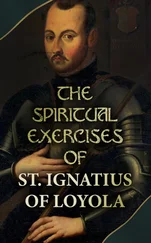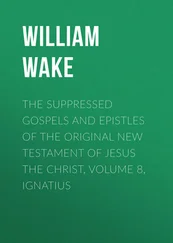Ignatius Donnelly - Antediluvian world
Здесь есть возможность читать онлайн «Ignatius Donnelly - Antediluvian world» весь текст электронной книги совершенно бесплатно (целиком полную версию без сокращений). В некоторых случаях можно слушать аудио, скачать через торрент в формате fb2 и присутствует краткое содержание. Жанр: Старинная литература, на русском языке. Описание произведения, (предисловие) а так же отзывы посетителей доступны на портале библиотеки ЛибКат.
- Название:Antediluvian world
- Автор:
- Жанр:
- Год:неизвестен
- ISBN:нет данных
- Рейтинг книги:5 / 5. Голосов: 1
-
Избранное:Добавить в избранное
- Отзывы:
-
Ваша оценка:
- 100
- 1
- 2
- 3
- 4
- 5
Antediluvian world: краткое содержание, описание и аннотация
Предлагаем к чтению аннотацию, описание, краткое содержание или предисловие (зависит от того, что написал сам автор книги «Antediluvian world»). Если вы не нашли необходимую информацию о книге — напишите в комментариях, мы постараемся отыскать её.
Antediluvian world — читать онлайн бесплатно полную книгу (весь текст) целиком
Ниже представлен текст книги, разбитый по страницам. Система сохранения места последней прочитанной страницы, позволяет с удобством читать онлайн бесплатно книгу «Antediluvian world», без необходимости каждый раз заново искать на чём Вы остановились. Поставьте закладку, и сможете в любой момент перейти на страницу, на которой закончили чтение.
Интервал:
Закладка:
Landa’s D (T) is a disk with lines inside the four quarters, the allowed Mexican symbol for a day or sun. So far as sound is concerned, the English day represents it; so far as the form is concerned, the Egyptian ‘cake,’ ideograph for (1) country and (2) the sun’s orbit is essentially the same.”
It would appear as if both the Phoenicians and Egyptians drew their alphabet from a common source, of which the Maya is a survival, but did not borrow from one another. They followed out different characteristics in the same original hieroglyph, as, for instance, in the letter b. And yet I have shown that the closest resemblances exist between the Maya alphabet and the Egyptian signs—in the c, h, t, i, k, m, n, o, q, and s—eleven letters in all; in some cases, as in the n and k, the signs are identical; the k, in both alphabets, is not only a serpent, but a serpent with a protuberance or convolution in the middle! If we add to the above the b and u, referred to in the “Proceedings of the American Philosophical Society,” we have thirteen letters out of sixteen in the Maya and Egyptian related to each other. Can any theory of accidental coincidences account for all this? And it must be remembered that these resemblances are found between the only two phonetic systems of alphabet in the world.
Let us suppose that two men agree that each shall construct apart from the other a phonetic alphabet of sixteen letters; that they shall employ only simple forms—combinations of straight or curved lines—and that their signs shall not in anywise resemble the letters now in use. They go to work apart; they have a multitudinous array of forms to draw from the thousand possible combinations of lines, angles, circles, and curves; when they have finished, they bring their alphabets together for comparison. Under such circumstances it is possible that out of the sixteen signs one sign might appear in both alphabets; there is one chance in one hundred that such might be the case; but there is not one chance in five hundred that this sign should in both cases represent the same sound. It is barely possible that two men working thus apart should bit upon two or three identical forms, but altogether impossible that these forms should have the same significance; and by no stretch of the imagination can it be supposed that in these alphabets so created, without correspondence, thirteen out of sixteen signs should be the same in form and the same in meaning.
It is probable that a full study of the Central American monuments may throw stronger light upon the connection between the Maya and the European alphabets, and that further discoveries of inscriptions in Europe may approximate the alphabets of the New and Old World still more closely by supplying intermediate forms.
We find in the American hieroglyphs peculiar signs which take the place of pictures, and which probably, like the hieratic symbols mingled with the hieroglyphics of Egypt, represent alphabetical sounds. For instance, we find this sign on the walls of the palace of Palenque, ### ; this is not unlike the form of the Phoenician t used in writing, ### and ### ; we find also upon these monuments the letter o represented by a small circle, and entering into many of the hieroglyphs; we also find the tau sign (thus ### ) often repeated; also the sign which we have supposed to represent b, ### ; also this sign, ### , which we think is the simplification of the letter k; also this sign, which we suppose to represent e, ### ; also this figure, ### ; and this ### . There is an evident tendency to reduce the complex figures to simple signs whenever the writers proceed to form words.
Although it has so far been found difficult, if not impossible, to translate the compound words formed from the Maya alphabet, yet we can go far enough to see that they used the system of simpler sounds for the whole hieroglyph to which we have referred.
Bishop Landa gives us, in addition to the alphabet, the signs which represent the days and months, and which are evidently compounds of the Maya letters. For instance, we have this figure as the representative of the month Mol ### . Here we see very plainly the letter ### for m, the sign ### for o; and we will possibly find the sign for l in the right angle to the right of the m sign, and which is derived from the figure in the second sign for l in the Maya alphabet.
One of the most ancient races of Central America is the Chiapenec, a branch of the Mayas. They claim to be the first settlers of the country.
They came, their legends tell us, from the East, from beyond the sea.
And even after the lapse of so many thousand years most remarkable resemblances have been found to exist between the Chiapenec language and the Hebrew, the living representative of the Phoenician tongue.
The Mexican scholar, Senor Melgar (“North Americans of Antiquity,” p.
475) gives the following list of words taken from the Chiapenec and the Hebrew:
------------+-----------+ | English. | Chiapenec. | Hebrew. |
------------+-----------+ | Son | Been | Ben. |
------------+-----------+ | Daughter | Batz | Bath. |
------------+-----------+ | Father | Abagh | Abba. |
------------+-----------+ | Star in Zodiac | Chimax | Chimah. |
------------+-----------+ | King | Molo | Maloc. |
------------+-----------+ | Name applied to Adam | Abagh | Abah. |
------------+-----------+ | Afflicted | Chanam | Chanan. |
------------+-----------+ | God | Elab | Elab. |
------------+-----------+ | September | Tsiquin | Tischiri. |
------------+-----------+ | More | Chic | Chi. |
------------+-----------+ | Rich | Chabin | Chabic. |
------------+-----------+ | Son of Seth | Enot | Enos. |
------------+-----------+ | To give | Votan | Votan. |
------------+-----------+
Thus, while we find such extraordinary resemblances between the Maya alphabet and the Phoenician alphabet, we find equally surprising coincidences between the Chiapenec tongue, a branch of the Mayas, and the Hebrew, a branch of the Phoenician.
Attempts have been repeatedly made by European scholars to trace the letters of the Phoenician alphabet back to the elaborate hieroglyphics from which all authorities agree they must have been developed, but all such attempts have been failures. But here, in the Maya alphabet, we are not only able to extract from the heart of the hieroglyphic the typical sign for the sound, but we are able to go a step farther, and, by means of the inscriptions upon the monuments of Copan and Palenque, deduce the alphabetical hieroglyph itself from an older and more ornate figure; we thus not Only discover the relationship of the European alphabet to the American, but we trace its descent in the very mode in which reason tells us it must have been developed. All this proves that the similarities in question did not come from Phoenicians having accidentally visited the shores of America, but that we have before us the origin, the source, the very matrix in which the Phoenician alphabet was formed. In the light of such a discovery the inscriptions upon the monuments of Central America assume incalculable importance; they take us back to a civilization far anterior to the oldest known in Europe; they represent the language of antediluvian times.
It may be said that it is improbable that the use of an alphabet could have ascended to antediluvian times, or to that prehistoric age when intercourse existed between ancient Europe and America; but it must be remembered that if the Flood legends of Europe and Asia are worth anything they prove that the art of writing existed at the date of the Deluge, and that records of antediluvian learning were preserved by those who escaped the Flood; while Plato tells us that the people of Atlantis engraved their laws upon columns of bronze and plates of gold.
Читать дальшеИнтервал:
Закладка:
Похожие книги на «Antediluvian world»
Представляем Вашему вниманию похожие книги на «Antediluvian world» списком для выбора. Мы отобрали схожую по названию и смыслу литературу в надежде предоставить читателям больше вариантов отыскать новые, интересные, ещё непрочитанные произведения.
Обсуждение, отзывы о книге «Antediluvian world» и просто собственные мнения читателей. Оставьте ваши комментарии, напишите, что Вы думаете о произведении, его смысле или главных героях. Укажите что конкретно понравилось, а что нет, и почему Вы так считаете.












